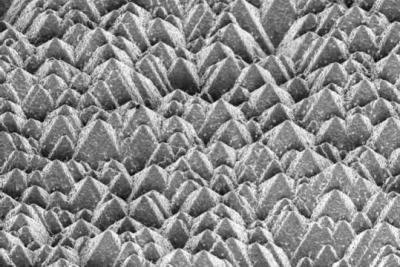EPFL the CSEM PV-center researchers have combined silicon and perovskite to create solar cells with the resulting efficiency of 25.2%, in what is regarded as a record for this type of tandem cell. Their innovative yet simple manufacturing technique could be directly integrated into existing production lines, and efficiency could eventually rise above 30%.

The researchers explain that creating an effective tandem structure by superposing two materials is no easy task. "Silicon's surface consists of a series of pyramids measuring around 5 microns, which trap light and prevent it from being reflected. However, the surface texture makes it hard to deposit a homogeneous film of perovskite," explains Quentin Jeangros, who co-authored the paper. A common problem in such cells arises from the fact that when the perovskite is deposited in liquid form, it accumulates in the valleys between the pyramids while leaving the peaks uncovered, leading to short circuits. The team tackled this problem by using evaporation methods to form an inorganic base layer that fully covers the pyramids. That layer is porous, enabling it to retain the liquid organic solution that is then added using a thin-film deposition technique called spin-coating. The researchers subsequently heat the substrate to a relatively low temperature of 150°C to crystallize a homogeneous film of perovskite on top of the silicon pyramids.
The new type of tandem cell is highly efficient and directly compatible with monocrystalline silicon-based technologies, which benefit from long-standing industrial expertise and are already being produced profitably. "We are proposing to use equipment that is already in use, just adding a few specific stages. Manufacturers won't be adopting a whole new solar technology, but simply updating the production lines they are already using for silicon-based cells," explains Christophe Ballif, head of EPFL's Photovoltaics Laboratory and CSEM's PV-Center.
At the moment, research is continuing in order to increase efficiency further and give the perovskite film more long-term stability. Although the team has made a breakthrough, there is still work to be done before their technology can be adopted commercially.



